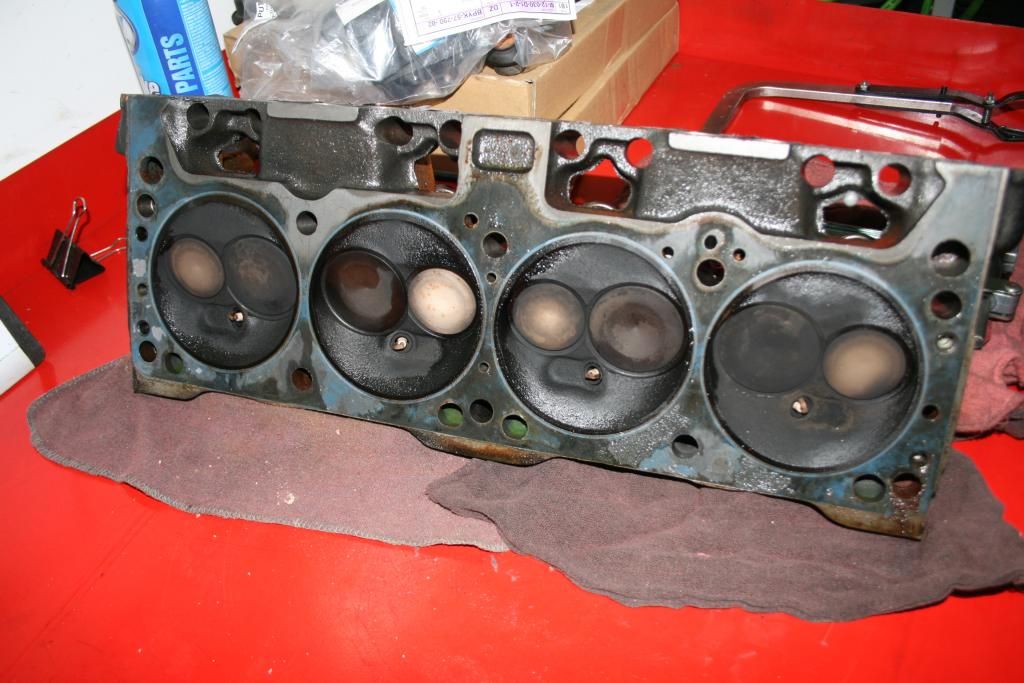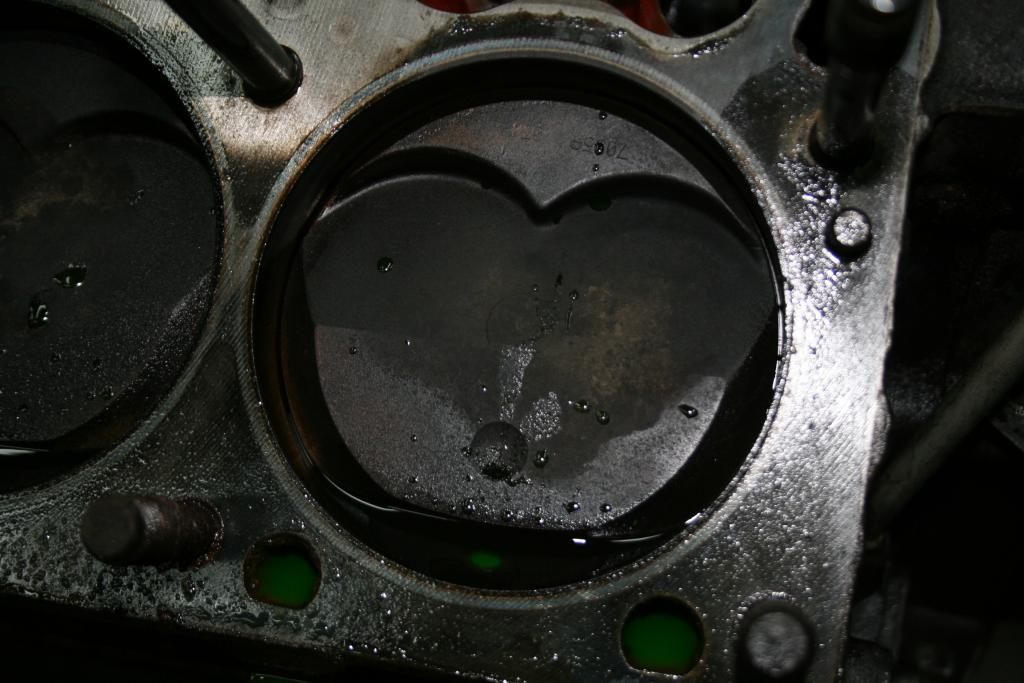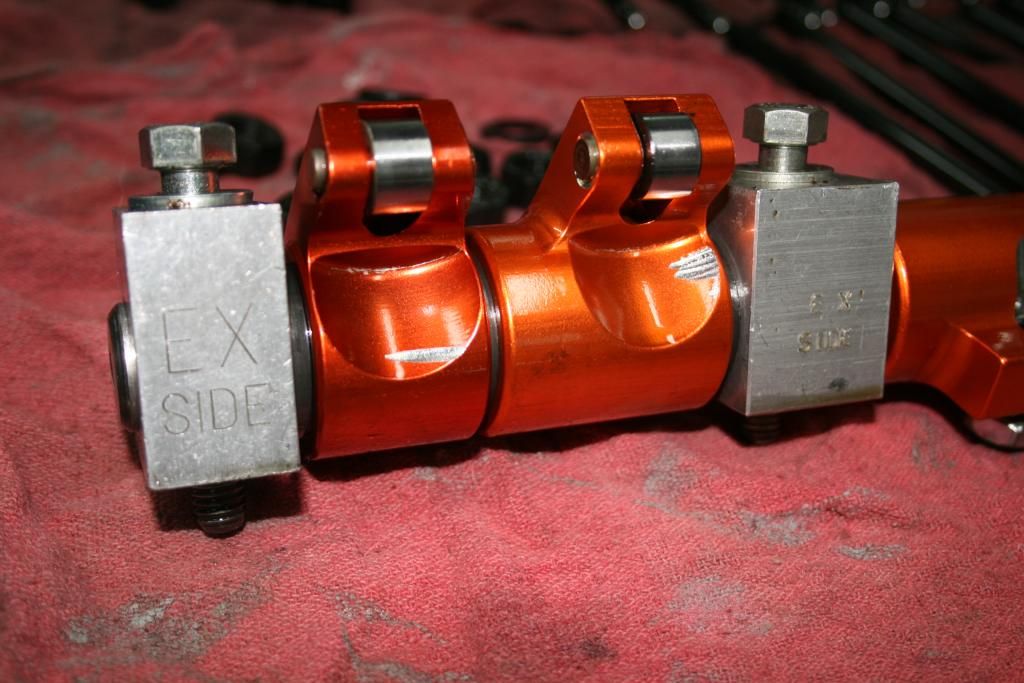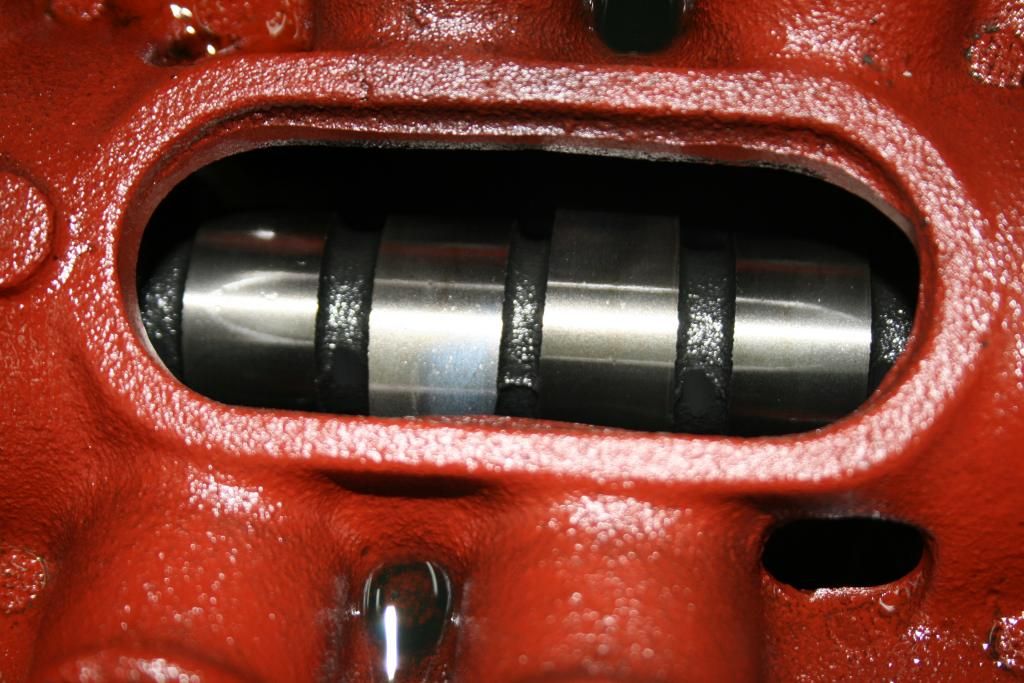The Great Pumpkin - '71 Duster
I always liked tuning what I have in hard parts. That way you have a known reference, and can reuse the good known parts. ( I would call virgin W2 castings, " good parts"...). A improvement, probably could be done on the M.P cam. If you like the cam, run it,) You have a lot left in that combination, I.M.O.. Maybe others will chime in with W2 combo's , or start a thread in small block tech forum .A good valve guide/ seat centering, would work wonders for starts.
So the top end is torn down. Have not had the time to take the oil pan off to look at the bottom end yet but I don't foresee anything surprising. One of the freeze plugs at the back of the block was leaking and there was starting to be a thin film of oil on everything. The clean up begins.
For the most part, things looked OK for an older build. There was no real damage to speak of, just a bunch of carbon on the valves due to the seals being shot. I had thought the cam lobes might be toast but it was just normal wear. Some of the rocker arms had some galling from the tops of the springs but nothing major.
Learned a few things about the internal parts that I was not sure of. The block is .030" over and has Speed Pro 7035p pistons in it. They are .018" out of the hole like stock. Gasket looked like .040" maybe but I'm not exactly sure. Has head studs. The inside edge of the deck was deburred. I was not sure if the lifter galley was tubed but it's not. Might do that for the rebuild. I could probably clean things up with a hone, put new bearings and rings in the short block and it would be good to go again.
So despite the valves being all carboned up, the heads were OK. Again, the main culprit was the old teflon valve seals. The little tension springs that keep them tight against the stems were all gone so they were leaking bad.
Consequently, the valves were a ***** to get out. The valve locks were truly locked. I had to whack the valve tips pretty hard a couple of times to get things loosened up. The springs are stiff, took a lot of muscle to hold them down to get the locks out. I am more used to late model OE valve springs which are pretty wimpy compared to these. These springs are not even that burly though, it's just a Mopar .557" cam.
Intake valves are 2.02" but I had the idea that they were larger. No porting in these heads, just your basic late '70s-early '80s 810 casting W2s.
So the end result of all of this is still up in the air. I spoke with Brian at IMM about how to proceed and he suggested I go with his CNC/RHS heads. He said they could support 550 horsepower with a 4" crank, even with a dual plane intake and a hydraulic flat tappet cam. I was surprised to hear that but it sounds good.
There is a part of me though that wants to rebuild the engine as it is and see what it can do with everything fresh. I have to think some basic head porting, a cam, a better converter and a change back to a 4.30 gear would get me in the mid 11s no problem. I could re use the valve train parts, crank, rods and pistons which is obviously a big cost savings. It's hard to deny the benefits of the 4" crank in a street car though since it's basically a drop in and relatively inexpensive. Decisions, decisions.
Anyway, here are some pics.
Here's the right side head as removed.
This is chamber #5 with the valves out.
Here are the valves from #7. These valves look like the ones I used to take out of older cars when I was working.
These are the teflon valve seals. The larger spring retainer that keeps the seal on the guide was there but the spring that keeps the seal tight against the stem were all gone.
This is cylinder #2. These are Speed Pro 7035p .030" over pistons, .018" out of the hole.
Pic of the witness marks on the underside of the rocker arms on cylinder #8.
Shot of the cam.
More to come!
I always liked tuning what I have in hard parts. That way you have a known reference, and can reuse the good known parts. ( I would call virgin W2 castings, " good parts"...). A improvement, probably could be done on the M.P cam. If you like the cam, run it,) You have a lot left in that combination, I.M.O.. Maybe others will chime in with W2 combo's , or start a thread in small block tech forum .A good valve guide/ seat centering, would work wonders for starts.






